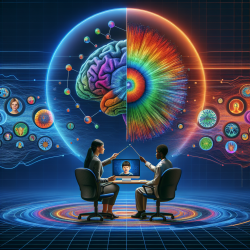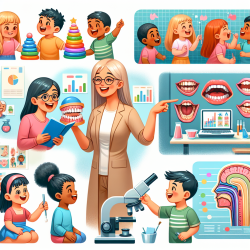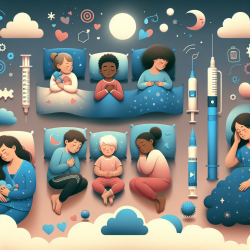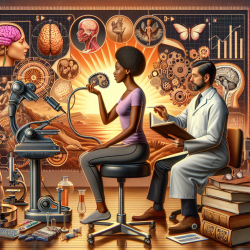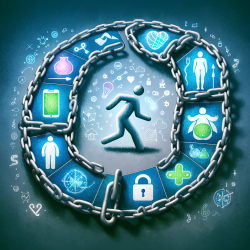Introduction
Autism Spectrum Disorders (ASD) are neurodevelopmental conditions characterized by social communication difficulties and repetitive behaviors. A significant genetic component underlies these disorders, as evidenced by the presence of milder, sub-threshold traits in first-degree relatives, known as the Broader Autism Phenotype (BAP). The study titled "The Broad Autism (Endo)Phenotype: Neurostructural and Neurofunctional Correlates in Parents of Individuals with Autism Spectrum Disorders" provides crucial insights into the neurostructural and neurofunctional characteristics of parents of individuals with ASD (pASD). This blog explores how practitioners can leverage these findings to improve their skills and outcomes in online therapy services for schools.
Key Findings from the Study
The research reviewed 13 studies involving neuroimaging techniques such as structural MRI (sMRI), functional MRI (fMRI), magnetic resonance spectroscopy (MRS), electroencephalography (EEG), and magnetoencephalography (MEG). Key findings include:
- Structural Differences: pASD exhibit intermediate brain volumes between ASD individuals and healthy controls, particularly in the hippocampus and amygdala.
- Functional Differences: Atypical brain activation patterns were observed in pASD during tasks related to face processing, empathy, and language, suggesting compensatory mechanisms at play.
- Neurochemical Differences: MRS studies indicated intermediate levels of Glutamate (Glu) and other molecules in pASD, correlating with BAP traits.
- Electrophysiological Differences: EEG and MEG studies revealed atypical gamma-band responses in pASD, similar to those observed in ASD individuals.
Implementing Research Insights
Practitioners can enhance their online therapy services by incorporating the following strategies based on the study's findings:
1. Personalized Therapy Plans
Understanding that pASD exhibit intermediate neurostructural and neurofunctional characteristics can help tailor therapy plans. Practitioners should consider the genetic and neurobiological background of each child, potentially involving family members in the assessment process to identify BAP traits.
2. Focus on Compensatory Mechanisms
The study suggests that pASD may employ compensatory mechanisms to mitigate neural atypicalities. Online therapy can incorporate strategies that enhance these compensatory skills, such as social skills training and cognitive-behavioral techniques.
3. Multimodal Assessment
Utilizing a combination of neuroimaging, electrophysiological, and behavioral assessments can provide a comprehensive understanding of a child's neurodevelopmental profile. This multimodal approach can inform more effective and individualized therapy interventions.
4. Gender-Specific Approaches
Given the study's indication that gender may influence neurostructural and neurofunctional outcomes, practitioners should consider gender-specific strategies in their therapy plans. For instance, boys and girls may benefit from different types of social skills training or cognitive exercises.
5. Encouraging Further Research
The study highlights the need for further research, particularly involving family-behavioral genetic designs and multimodal imaging techniques. Practitioners can contribute to this research by collecting data from their therapy sessions and collaborating with academic institutions.
Conclusion
The findings from "The Broad Autism (Endo)Phenotype: Neurostructural and Neurofunctional Correlates in Parents of Individuals with Autism Spectrum Disorders" offer valuable insights that can enhance online therapy services for children with ASD. By implementing personalized therapy plans, focusing on compensatory mechanisms, utilizing multimodal assessments, considering gender-specific approaches, and encouraging further research, practitioners can create better outcomes for children.
To read the original research paper, please follow this link: The Broad Autism (Endo)Phenotype: Neurostructural and Neurofunctional Correlates in Parents of Individuals with Autism Spectrum Disorders.
